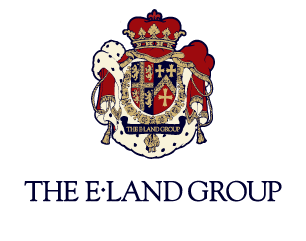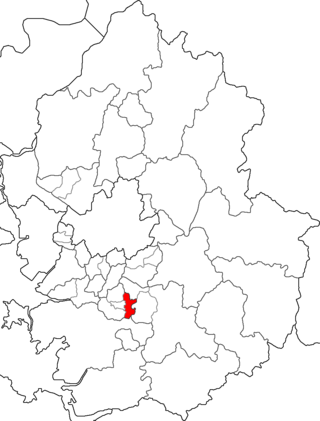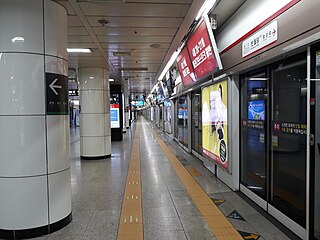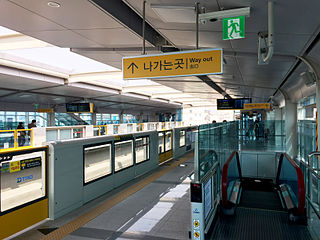
Daegu, formerly spelled Taegu and officially Daegu Metropolitan City, is a city in southeastern South Korea.

On February 18, 2003, an arsonist set fire to a Daegu Metro subway train as it arrived at Jungangno station in central Daegu, South Korea. The resulting blaze, which spread when a second train stopped at the same station, killed 192 people and injured another 151. It remains the deadliest loss of life in a single deliberate incident in South Korean peacetime history, surpassing the 1982 shooting rampage committed by Woo Bum-kon.

Daegu FC is a South Korean professional football club based in Daegu. The club was founded as a community club at the end of 2002, and made their K League 1 debut in 2003. Daegu has played mostly in the K League 1 but was relegated at the end of the 2013 season to the K League 2. They were promoted back to the top tier for the 2017 season and went on to win the Korean FA Cup in 2018, which qualified them for the 2019 AFC Champions League. The club's best season in K League 1 was in 2021, when they finished third out of twelve teams. The same year, they were also runners-up in the Korean FA Cup and progressed to the round of 16 in the 2021 AFC Champions League.

Daegu Metro Line 1 was, until mid-2005, the only rapid transit line in the South Korean city of Daegu. It is operated by the Daegu Transit Corporation. The line color is ●scarlet.

Dongdaegu Station (Korean: 동대구역), meaning "East Daegu Station", is a railway station in Daegu, South Korea. It is on the national high-speed KTX railway network, 282 km (175 mi) south of Seoul Station.

Daegu Metro is a metro system that serves primarily the South Korean city of Daegu, operated by Daegu Transportation Corporation from 5:30AM to 0:00AM with the interval from 5 to 8 minutes between each car's arrival. With the fastest track speed at 80 km/h (50 mph), it takes 55 minutes for Line 1 and Line 2, and 48 minutes for Line 3 to reach the terminus station. As of 2015, the number of average daily passengers is 186,992 people for Line 1, 177,984 people for Line 2, and 69,127 people for Line 3.

Daegu Metro Line 2 is the second rapid transit line in the South Korean city of Daegu. It is operated by the Daegu Transit Corporation.

E·Land Group (Korean: 이랜드그룹) is a South Korean conglomerate headquartered in Changjeon-dong Mapo-gu Seoul, South Korea. E-Land Group takes part in retail malls, restaurants, theme parks, hotels, and construction businesses as well as its cornerstone, fashion apparel business. It has operations worldwide through its subsidiary E-Land World.

Yeongtong-gu, established in 2003, is the eastern district of the city of Suwon in Gyeonggi-do, South Korea. It is split from Paldal-gu and is Suwon's newest "gu".

The Gyeongbu high-speed railway, also known as Gyeongbu HSR, is South Korea's first high-speed rail line from Seoul to Busan. KTX high-speed trains operate three sections of the line: on 1 April 2004, the first between a junction near Geumcheon-gu Office station, Seoul and a junction at Daejeonjochajang station north of Daejeon, and a second between a junction at Okcheon station, southeast of Daejeon, and a junction near Jicheon station, north of Daegu entered service; then on 1 November 2010, the third section, between a junction west of Daegu and Busan became operational. The missing gaps across the urban areas of Daejeon and Daegu were in construction for an expected opening in 2014, separate tracks into Seoul Station were also planned. The temporary ends of the three sections were connected to the parallel conventional Gyeongbu Line by tracks that will serve as interconnector branches upon the completion of the entire line. On 1 August 2015, construction on urban areas of Daejeon and Daegu were completed; all the sections of HSR line were connected.

Daegu station is a station on the Gyeongbu Line and Daegu Metro Line 1 in Chilseong-dong, Buk District, Daegu, South Korea.
Gyo-dong may refer to the following dong (neighbourhoods) in South Korea:

Hyeonchungno Station is a station of Daegu Metro Line 1 in Nam-gu, Daegu, South Korea.

National University of Education Station is an underground station of Daegu Subway Line 1 in Daemyeong-dong, Nam District, Daegu, South Korea. It is named for Daegu National University of Education. It is the first station of a city railroad of Daegu connected with this college.

Myeongdeok Station is a station of Metro Line 1 and Metro Line 3 in Namsan-dong, Jung District, Daegu, South Korea. On March 13, 2009, an entrance elevator was installed. There is connection track to the No. 2 subway line between Banwoldang station and Myeongdeok station.

Banwoldang Station is a station of the Daegu Metro Line 1 and Line 2 in Deoksan-dong, Jung District, Daegu, South Korea. Banwoldang Station is the only transfer station of Daegu Metro. Banwoldang underground shopping was created with the second line opening.
The Daegu Democracy Movement broke out February 28, 1960, ahead of the March 1960 South Korean presidential election during the period of Syngman Rhee's government, in resistance against his Liberal Party's dictatorship. After this movement, the 3.15 Masan democracy movement broke out, and the Daegu Democracy Movement became the main cause of the April Revolution.

Cheongna Hill Station is a station of Daegu Subway Line 2 and Line 3 in Daesin-dong, Dongsan-dong, and Namsan-dong, Jung District, Daegu, South Korea.

Daegu Metro Line 3 is the third line in the Daegu Metro rapid transit system in Daegu, South Korea. It is operated by the Daegu Transit Corporation. Daegu Metro Line 3 is a monorail line, and Hitachi Monorail was contracted for the supply of monorail, track switches and signalling system. It is Korea's first straddle-type monorail system.

Paldal Market Station is a station of the Daegu Metro Line 3 in Nowon-dong, Buk District, Daegu, South Korea.

















